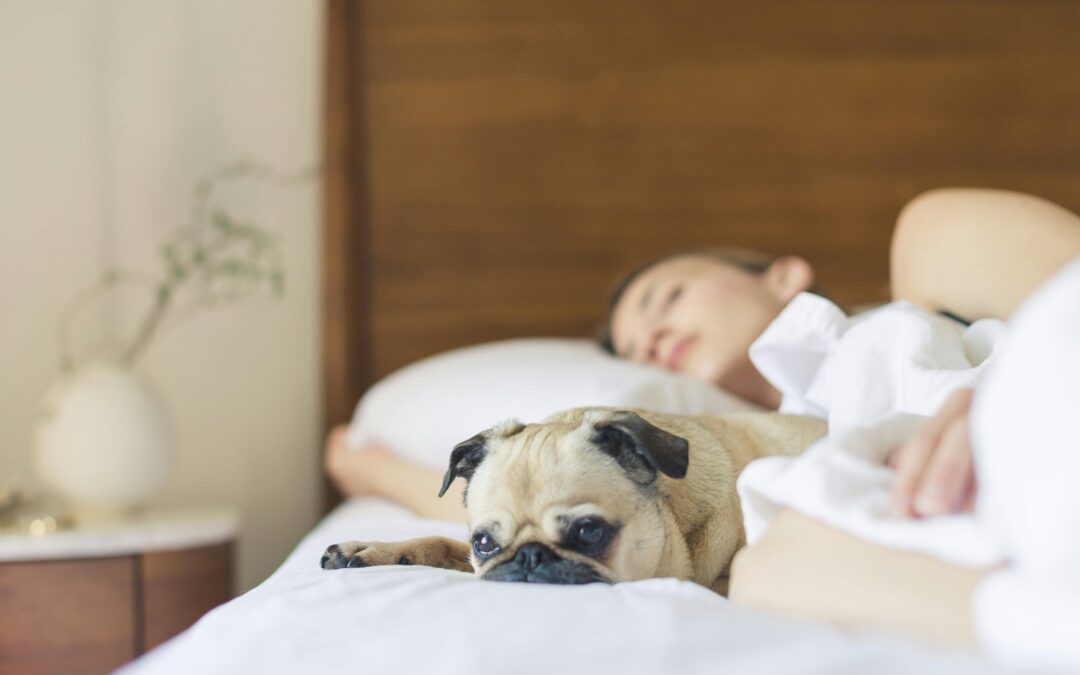Getting enough deep sleep—the slow-wave sleep (SWS) phase—is more than just a luxury. It’s when your brain restores, consolidates memories, your body repairs, and your metabolism resets. As Sleep Foundation explains, poor deep-sleep (SWS) contributes to worse health outcomes. Sleep Foundation+1
Below is a blog-style guide with top evidence-based strategies to improve your deep sleep. Feel free to pick and choose the ones that suit your lifestyle, and adopt gradually rather than all at once.
Why Deep Sleep Matters
Before diving into tips, let’s cover why deep sleep is so important:
- Deep sleep (slow-wave sleep) is the stage where the brain exhibits slow delta waves and is least responsive to external stimuli. PubMed+1
- It supports memory consolidation (from hippocampus → cortex), physiological restoration, immune function, and metabolic regulation. NSF – National Science Foundation+1
- With age, or with poor sleep habits, deep sleep tends to decrease, which may underlie many health risks. ScienceDaily+1
Because of this, optimizing for more and deeper slow-wave sleep is a worthwhile goal.
Strategy #1: Consistent Sleep Schedule
One of the simplest yet most impactful strategies is keeping a consistent bedtime and wake-time.
- Irregular sleep-wake timing disrupts the circadian rhythm and makes it harder to fall into deep sleep. Sleep Foundation+1
- Going to bed and waking up at roughly the same times every day helps your body anticipate the deep-sleep windows.
How to implement:
- Choose a bedtime and wake time you can realistically maintain even on weekends.
- Try to allow for ~7–9 hours of sleep (for most adults).
- If you’re shifting sleep schedule, adjust in small increments (15–30 min) rather than drastically.
Strategy #2: Optimize Your Sleep Environment
Your bedroom setup matters a lot. A supportive environment can facilitate deeper SWS.
Key environmental tweaks:
- Temperature: Cooler rooms (~15-19 °C / 60-67 °F) support deeper, more efficient sleep. anatomē+1
- Darkness & quiet: Minimizing light (especially blue light) and noise helps prevent interruptions and supports deeper sleep onset. The Times of India+1
- Wind-down buffer: Create a pre-bed routine (30–60 minutes) to transition from wake to sleep mode (dim lights, relax, minimal screens). Mindful Wholeness
- Optional: Sound stimulation: Some research shows playing precisely timed sounds during sleep can enhance slow waves (though it’s more experimental). ScienceDaily
How to implement:
- Set your thermostat to a cooler setting at night, or use bedding that allows airflow.
- Use blackout curtains, eye-mask, or earplugs if needed.
- Turn off bright screens ≥1 hour before bed; consider blue-light filters.
- Establish a calming routine: reading (paper book), stretching, meditation.
- If noise is unavoidable, use a white-noise or low-level pink-noise machine (see research above).
Strategy #3: Manage Stress and Relaxation
Cortisol and an activated sympathetic nervous system can interfere with entering deep-sleep phases. Lowering stress is key.
- Relaxation techniques like progressive muscle relaxation (PMR) have been shown to significantly increase deep sleep. For example: “squeezing and relaxing big muscle groups increased deep sleep by ~125%” in a study. Science Focus
- Mindfulness, meditation, or calming rituals help quiet the mind and reduce pre-bed arousal. Sleep Foundation+1
How to implement:
- Allocate 5-15 minutes before bed for a relaxation practice: PMR, deep breathing, yoga, or guided meditation.
- Avoid work, intense mental activity, or emotionally charged conversations just before bed.
- If you wake in the night, try to keep lights low and mind calm rather than jumping into your phone.
Strategy #4: Exercise (At the Right Time)
Physical activity is a powerful lever — but timing and intensity matter.
- Regular aerobic exercise has been linked with increased deep sleep (SWS) and improved sleep structure. Geartosleep.com+1
- However: Vigorous exercise too close to bedtime may elevate heart rate, cortisol, and delay sleep onset or reduce deep sleep. Mindful Wholeness
How to implement:
- Aim for ~150 minutes of moderate exercise per week (e.g., brisk walking, cycling).
- Prefer exercising in the morning or early afternoon if possible.
- If you exercise in the evening, keep it light (stretching/yoga) and finish at least 2-3 hours before bedtime.
Strategy #5: Diet, Substances & Timing
What you eat — and when — influences sleep architecture and deep sleep.
- Heavy meals, high-fat or high-carb meals close to bedtime can disrupt slow-wave sleep. anatomē+1
- Caffeine and alcohol reduce deep sleep: caffeine blocks sleep-promoting adenosine; alcohol fragments sleep and reduces restorative SWS. BetterHelp+1
- Some nutrients (magnesium, tryptophan) may support better sleep in general, though direct large-scale evidence on deep-sleep is still emerging. Geartosleep.com
How to implement:
- Eat your last large meal 2-3 hours before bed if possible; keep late-night snacks light.
- Avoid caffeine after ~2–4 pm (depending on your sensitivity and bedtime).
- Limit alcohol especially within 3–4 hours of bedtime.
- Make your diet balanced: include sleep-friendly foods (almonds, leafy greens) and minimize processed junk close to bedtime.
Strategy #6: Pre-Bed “Warm-Up” & Cooling Down
Preparing your body physically for deep sleep can help increase the onset of slow waves.
- A warm bath or sauna ~90 minutes before bed can raise body temperature slightly and then the subsequent cooldown helps trigger sleepiness and deeper sleep. Sleep.ai
- After the warm phase, allow your skin temperature to drop: this helps signal the brain you’re ready for deep sleep.
- Some evidence suggests the earlier part of the night (first ~2–3 hours) is when the highest proportion of deep sleep occurs, so aligning your bedtime accordingly can help.
How to implement:
- Try a warm bath or hot shower ~60–90 minutes before bed, then transition to your bed once you feel cooled down.
- Use bedding and room temperature to maintain a drop in core body temperature.
- Aim to be in bed at a time that allows the first deep-sleep cycle to align with the early part of the night (so avoid going to bed very late if possible).
Bonus Strategy: Sound & Stimulation Technologies
Emerging research shows that precisely timed audio stimulation (and even brain-wave entrainment) can enhance slow-wave sleep in experimental settings.
- A study found that playing targeted sounds (during SWS) improved slow-wave activity and memory consolidation. ScienceDaily
- Another study showed hypnotic suggestions increased SWS in naps. PubMed
How to approach cautiously:
- These technologies are promising, but not yet mainstream “guaranteed” fixes.
- If you’re interested, research the device/tech carefully, and monitor whether it genuinely improves your sleep metrics (duration of deep sleep, how you feel upon waking).
- They should be in addition to, not instead of, basic sleep hygiene.
Putting It All Together: A Sample “Deep Sleep” Evening Routine
- ~3 hours before bed: Finish your large meal, stop caffeine/alcohol.
- ~2 hours before bed: Exercise lightly or finish moderate workout.
- ~60–90 minutes before bed: Take a warm bath or shower, then allow your body to cool.
- ~30–60 minutes before bed: Dim lights, avoid screens, do a relaxing practice (PMR, breathing, reading).
- Bedtime: Go to bed at roughly the same time every night. Ensure your room is cool (~16–19 °C), dark, quiet.
- During sleep: If you wake, avoid bright screens or stimulating activity; keep the environment calm.
- Morning: Wake at the same time daily; get some natural light exposure to reinforce your circadian rhythm.
What to Expect & When to Seek Help
- Improve habits consistently over at least 2-4 weeks before expecting major changes. Sleep architecture doesn’t shift overnight.
- Monitor how you feel in the morning, not just how many hours of “deep sleep” an app reports. Real-world restorative effect counts.
- If you consistently have very low deep sleep (e.g., <10 % of total sleep time), or you wake unrefreshed despite good sleep habits, consider speaking to a sleep specialist. Issues like sleep-apnea, periodic limb movements, or other disorders may be at play.
Final Thoughts
Improving deep sleep is about consistency, environment, recovery, and smart timing. These strategies are backed by science and, when applied together, can lead to more restorative rest, better daytime energy, cognitive clarity, and long-term health.
Start with one or two changes this week (e.g., consistent bedtime + cool room), then layer in others gradually. Over time you’ll likely notice deeper, more meaningful rest.
Sleep well—and here’s to unlocking that deep, regenerative sleep your body deserves. 🧘♂️
References
- How to Get More Deep Sleep: Tips for a Restful Night. Sleep Foundation. Sleep Foundation
- Deep Sleep: Stages, Benefits, Requirements, Tips, and More. Healthline. Healthline
- 8 Science-Backed Secrets to a More Restful Night’s Sleep. ScienceFocus. Science Focus
- Deepening sleep by hypnotic suggestion. PubMed. PubMed
- Enhancing deep sleep. ScienceDaily (ETH Zürich). ScienceDaily
ABOUT THE LONGEVITY ACADEMY
At Longevity Academy, we bring science into action so people from all walks of life—health practitioners, wellness advocates, and curious lifelong learners—can unlock longer, stronger, healthier lives. Our global education platform offers scientifically grounded, medically validated courses on everything from NAD therapy, intermittent fasting, red-light therapy, sleep optimization, nutrition, immunity, movement, and brain health. With free foundational courses plus advanced coaching, mentorship, and community support, learners can assess their current health using our proprietary Longevity Scorecard and follow a roadmap for improvement. Backed by expert instructors across medicine, wellness, and biohacking, we aim to democratize longevity knowledge for everyone—not just the few—so you can start improving your healthspan today.

